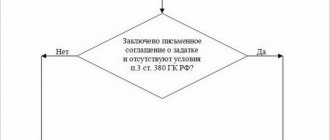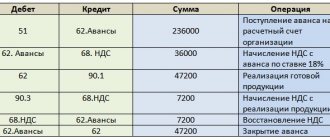Every day in its work every company encounters one or another banking operation. Receipt of payment for goods to the bank account, transfer in favor of the supplier of materials, issuance of funds to an employee through a cash register - interaction with the bank has become an integral part of the activities of a modern organization. In this article we will talk about how to reflect basic bank account transactions in transactions.
What determines financial relations with a bank?
When working with a banking organization, a legal entity enters into a relationship with it with certain obligations of both parties. In order for cooperation to begin, it needs to be documented. These obligations are governed by the agreement signed between the parties:
- to open a bank account (Article 845 of the Civil Code of the Russian Federation);
- for placing a deposit (Article 834 of the Civil Code of the Russian Federation);
- to receive credit funds (Article 819 of the Civil Code of the Russian Federation);
- factoring (financing against the assignment of a claim on funds);
- other financial relationships permitted by the Charter of the credit organization and the legislation of the Russian Federation.
Question: Is it possible for a developer to take into account the costs of bank services for sending an equity participation agreement to Rosreestr under the simplified tax system? View answer
What it looks like in the chart of accounts
Now is the time to look at the chart of accounts and see what a current account looks like in the 1C Accounting program. Let's try to talk about the account and "predict" what we expect to see when we start working with it. OK?
Looking at the characteristics we see that 51 accounts:
- “Analytical”, since there are sub-accounts: “Bank accounts” and “Cash flows”
- “Active” - we see the letter “A”
Remember, the account is “Active” , which means the information from it in the Balance sheet will go to the Asset table. The account balance can only be in Debit or 0. The receipt of all money will be displayed in Debit, and the expense will go to Credit.
The subconto “Bank account” in the posting will substitute the specific bank account of the company selected by the user.
Subconto “Cash Flow” , why is it interesting to us? The fact is that this subconto divides the information on the current account into more detailed information, showing us how non-cash funds move. Look at the most common “Cash Flow” options that are available in the 1C Accounting program.
Example of a directory of a real enterprise
Another example of a directory of a real enterprise
Sample report
Paid banking services
Banking operations regulated by domestic legislation are listed in Art. 5 of Federal Law No. 395-1 of December 2, 1990 “On Banks and Banking Activities” as amended on July 26, 2021. The most popular and frequently encountered among them are the following:
- opening and maintaining accounts of legal entities;
- cash settlement services (payments, collection, cash issuance, etc.);
- sale of currency (cash and non-cash form);
- issuing loans;
- trust management of funds and/or property;
- rental of safe deposit boxes for storing papers and valuables;
- lessor functions, etc.
All these operations for the bank client are subject to a commission - a fee for the provision of these services under the concluded agreement.
How to take into account bank services when calculating income tax ?
Reflection of acquiring. Setting up functionality and reference books
To reflect these operations in the program, program functionality settings are needed. To do this, go to “Main-Settings-Functionality”.
Fig.1 Section “Functionality”
On the “Bank and cash desk” tab, you must check the “Payment cards” checkbox. This functionality includes the ability to conduct transactions using payment cards and bank loans.
Fig.2 Tab “Bank and cash desk”
First, we need to enter and set up an agreement with the bank. This can, of course, be done during operations, but we will consider this step separately. In “Counterparties-Directories-Purchases and Sales”, in the card of our bank we will enter the data of the acquiring agreement.
Fig.3 Directory “Counterparties”
Fig.4 Acquiring agreements
In this case, the contract type is “Other”.
Fig.5 Type of contract
In the future, we will need this data when filling out the “Types of Payment” directory, the data of which is indicated in the document reflecting the payment card transaction. This directory is available in the menu section “All functions-Directories-Types of payment for organizations”.
Fig.6 Types of payment for organizations
The field for filling it out will be available directly in the “Payment card transaction” document, which we will look at a little later.
Let’s create a directory element “Types of Payments” and fill in the data in accordance with the terms of the acquiring agreement. Please note the field where the bank interest and settlement account are indicated.
Fig.7 Payment types
Fig.8 Creating a payment type
The terminal is first configured by specialists, the data of which is also reflected in the settings.
Fig.9 Setting up the terminal
These settings will be used when filling out the “Payment card transaction” document.
Features of charging fees for banking services
The amount of the bank commission is established in a contractual form. It cannot be changed by any party - neither the client nor the bank; to do this, you will have to change the existing agreement or accept a new one.
FOR YOUR INFORMATION! Commissions are not paid separately; during the operation, the bank withdraws these funds from the customer’s account and issues a special bank order for them.
Clause 9.3 of Regulation No. 383-P, which was approved by the Bank of Russia on June 19, 2012, specifies two equally legitimate options for withdrawing payment for bank services from the client:
- with preliminary acceptance - that is, before money for services is withdrawn, the client must agree to this;
- without informing the payer - automatically.
How to take into account the costs of banking services ?
The terms for collecting commissions are negotiated individually; this can be either a daily calculation or other selected and agreed upon periods.
Example of transactions with a beneficiary: receipt and write-off of a guarantee
Let's look at an example that helps the beneficiary navigate the main entries in accounting.
Trading LLC purchased a batch of goods worth RUB 1,693,461. on deferred payment terms. The seller PJSC Delivery requested a bank guarantee as security for the payment obligation.
Postings to the beneficiary (PJSC "Supply") after receipt of the guarantee and delivery of the goods:
| Accounting entries | Amount, rub. | Contents of operation | |
| Debit | Credit | ||
| 008 | — | 1 693 461 | The received bank guarantee is reflected on the balance sheet |
| 62 | 90 | 1 693 461 | The goods were shipped to the buyer LLC Trading |
The buyer did not pay for the goods within the period specified in the contract. PJSC "Supply" sent a written message to the bank about the need to pay the principal's debt under the bank guarantee, attaching the necessary documents.
After reviewing the documents and checking them, the bank transferred the money under the guarantee. The following entries were made in the accounting of PJSC Supply:
| Accounting entries | Amount, rub. | Contents of operation | |
| Debit | Credit | ||
| 51 | 76 | 1 693 461 | Received money from the bank under a guarantee |
| 76 | 62 | 1 693 461 | The debt of Trading LLC has been repaid |
| — | 008 | 1 693 461 | Payment security written off from off-balance sheet accounting |
If the buyer repaid the debt for the goods on time, there would be significantly fewer accounting entries in the beneficiary's accounting. Everything would be limited to reflecting and writing off the received collateral in an off-balance sheet account.
Ambiguous issues of accounting and tax accounting of bank commissions
The organization's fixed costs for paying commissions for banking services must be correctly recorded in accounting. This seemingly simple question contains several pitfalls that a competent accountant needs to avoid.
What are these expenses: other or non-operating?
What cost item should be included in the money charged for services by the bank? On the one hand, these are funds directly related to the activities of the organization. But on the other hand, this connection when paying for banking transactions is not always obvious. For example, a company took out a loan and opened an account to support it. Since this account accompanies a targeted loan intended for running a business, we can talk about “other expenses for production and sales” (clause 1 of Article 264 of the Tax Code of the Russian Federation). But the accompanying invoice itself has nothing to do with the main activity of the legal entity, it only accompanies the loan, so the commission for it can be qualified as non-operating expenses (clause 1 of Article 265 of the Tax Code of the Russian Federation).
IMPORTANT! Tax authorities will not consider any of the positions adopted by the organization an error, since neither other nor non-operating expenses affect the income tax base.
Difficulties of lending
Taking out a loan is a popular and widely demanded banking service. Often, the loan agreement includes conditions for the company to make additional payments to the bank. How to correctly account for the commission for these services? The Ministry of Finance responds in two ways:
- if commissions are expressed as a fixed figure, then these expenses can be regarded as other or as non-operating expenses;
- if the commission represents a certain share (percent), the expenses will be treated as “interest on debt obligations” (Article 269 of the Tax Code of the Russian Federation).
NOTE! The commission for a number of other banking services, such as opening a letter of credit, factoring agreement, etc. should also be qualified as a percentage of the debt obligation (letters of the Ministry of Finance of the Russian Federation dated June 18, 2009 No. 03-03-06/1/408 and dated May 13 2009 No. 03-07-11/136).
Making payments for the purchase of assets
The bank can participate in such operations not only by processing payment instruments, but also, for example, by opening a letter of credit. The accountant has a question: are bank commissions included in the initial cost of the asset purchased in this way? After all, it consists of all the costs of acquiring it. Or should we include it among other or non-operating expenses as a fee for a banking service?
The last position is more profitable for the company because:
- the amount is written off from taxable income immediately and not through depreciation;
- contracts for the purchase of an asset and for payment for a banking service are not related to each other.
Salary card service
This is the predominant method of paying labor remuneration today. The bank, of course, charges a commission for crediting money to employees’ card accounts, as well as for the plastic cards themselves. Tax authorities do not recognize the same expenses:
- The fee for processing documents for crediting salary funds is part of the production costs for organizing settlements with personnel. Therefore, it is legitimate to take this money into account as production costs that reduce the organization’s profit (letters from the Ministry of Finance of the Russian Federation dated April 20, 2009 No. 03-03-06/2/88 and dated August 4, 2008 No. 03-04-06-02/88).
- The payment to the bank for issuing, re-issuing and servicing plastic cards is not directly related to the costs of paying salaries, that is, it is not justified from the point of view of the company’s expenses (the costs are borne by the organization, and employees use the cards). In light of the latest clarifications from the Ministry of Finance, these costs are allowed to be included in other expenses, while excluding them from the income of employees, because employees do not choose this particular form of receiving wages, it is prescribed in their employment contracts, which means that the cards are made by the bank specifically for the company, and not for them personally.
Commission for “non-banking” services provided by the bank
One of the important points when reflecting bank commissions as expenses reflected on the taxable base is to determine whether they relate directly to banking services. If the bank charged a commission for a service not included in the list of Federal Law No. 395, for example, provided advice, the company can no longer recognize these funds as other or non-operating expenses and reduce taxable profit. It will be necessary to qualify such payments as costs for consulting and other services or as other costs of production or sales (subparagraphs 15 and 49 of paragraph 1 of Article 264 of the Tax Code of the Russian Federation).
Accounting for funds in a current account - a minimum of theory
The main purpose of this area is to store part of the company’s funds and settle settlements with counterparties. Money stored in a current account is called non-cash money, or in common parlance – BezNal.
The most common mutual settlements via Non-Nala (according to a current account) occur for “payment to the supplier”, “receiving payment from customers”, “transfer of taxes”, “payment of wages to employee cards”, “repayment of loans, borrowings”, “withdrawal of money to the cash register” companies" .
A company may have more than one current account. He may have several current accounts in one bank, or he may open current accounts in different banks. As a rule, an enterprise opens current accounts in those banks where the terms of service are more favorable. Yes, yes, “for the work” of the current account, the bank issues a certain amount to our company every month.
The accounting account responsible for accounting for funds in the current account is 51 “Current accounts”. The essence of all actions on a current account is the arrival of money on it and the expenditure, in the sense of leaving it. All company events affecting the current account are documented in their own primary documents.
An example of filling out an advertisement for a cash contribution
With the completed form and cash, the employee of the institution goes to the bank. The employee transfers the completed paper and funds to the bank's cash desk. The bank teller checks the document and counts the cash. If no errors are found, the bank employee fills out the fields of form 0402021, certifies with a signature in all sections and a stamp in the “Receipt” block. The “Order” table block remains in the bank, and the remaining parts of the document remain with the employee of the institution.
The cash deposit transaction must be formalized with a special document, and the cash must be taken to the bank along with it. First, the cashier must issue a cash order for the amount of excess cash and generate a report that completes the operations for the working day.






